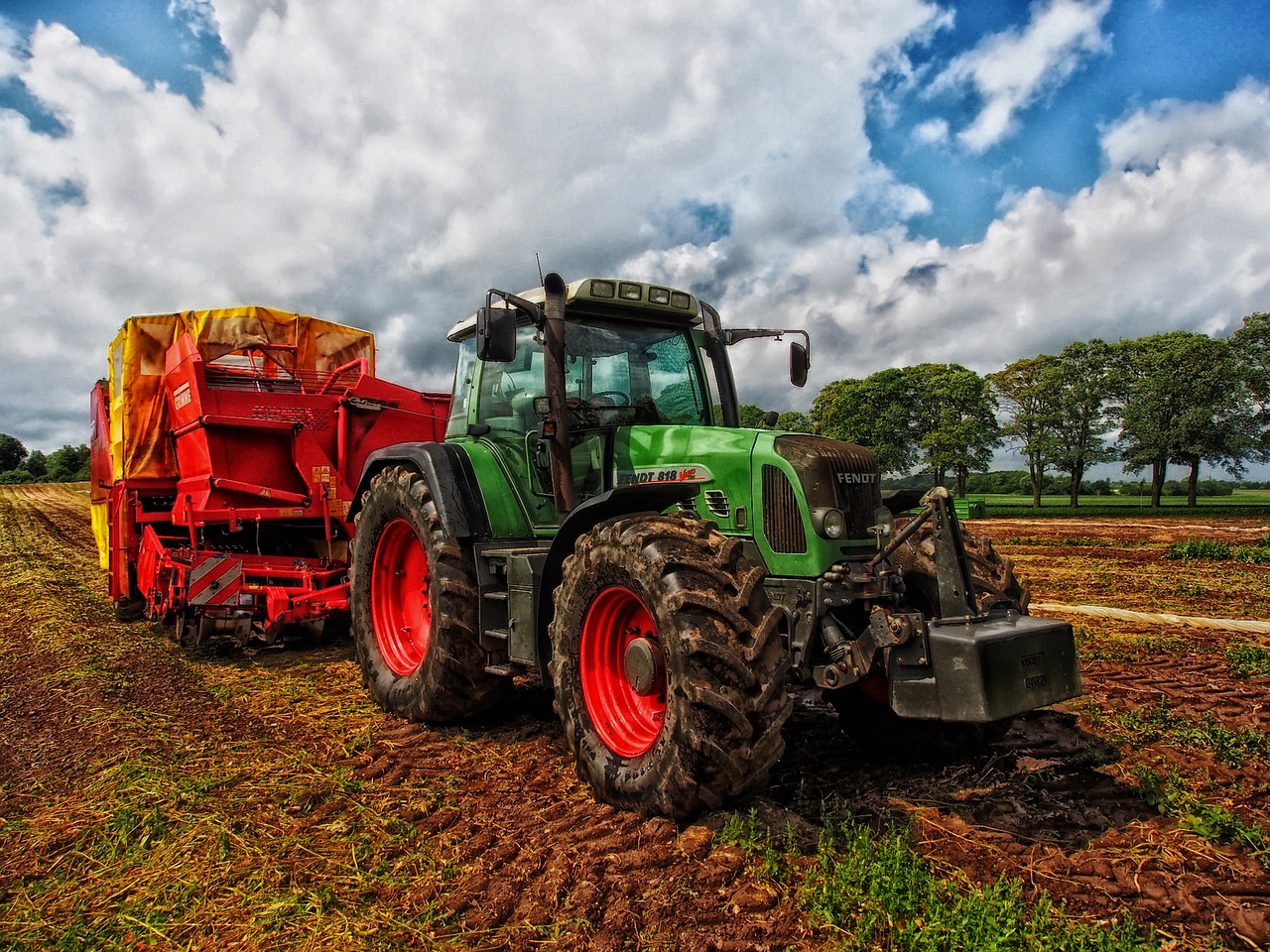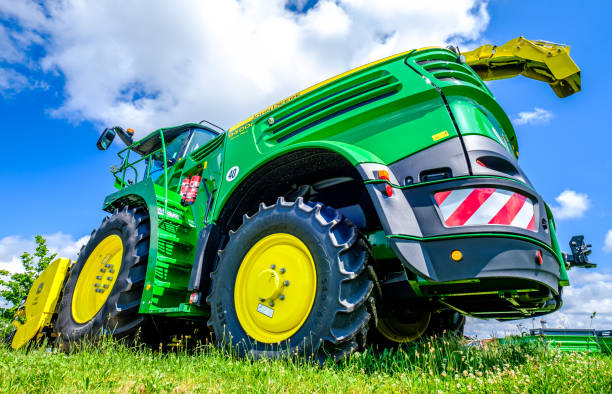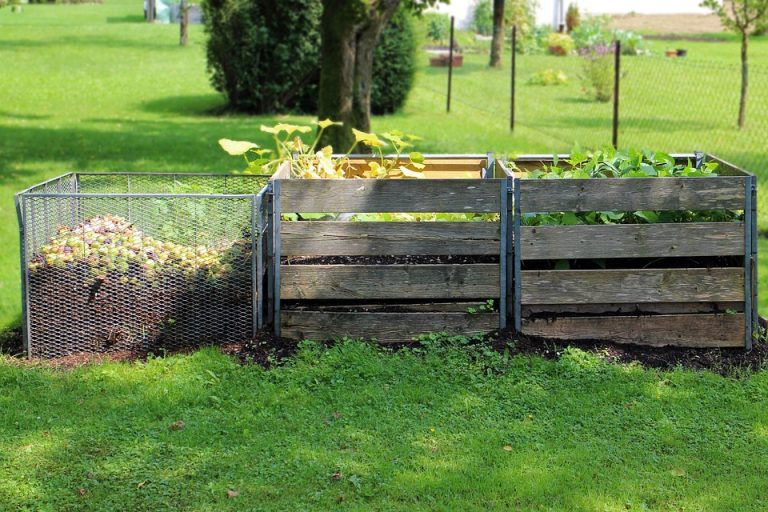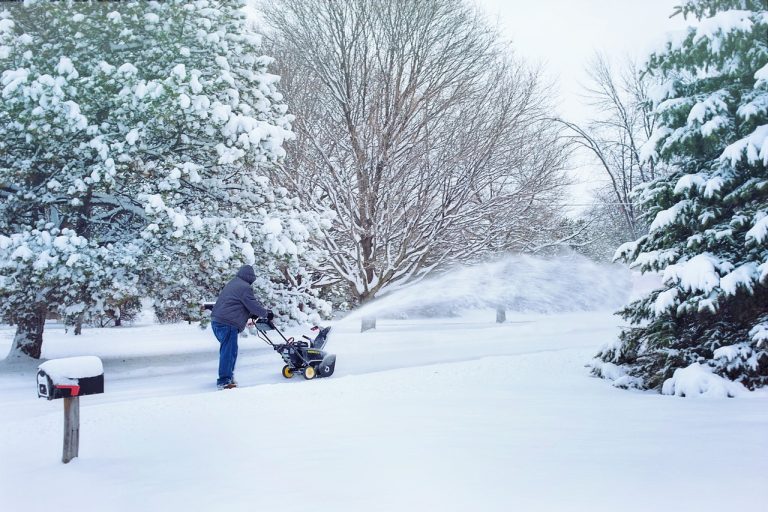TYM TRACTOR PROBLEMS (5 common issues)
“In the world of agriculture, where the rhythm of life is dictated by the cycles of nature, there exists a trusty workhorse that stands as a symbol of reliability and resilience: the Tym tractor.
TYM tractors and John Deere tractors are both agricultural machinery manufacturers, but they have different product lines and designs.
However, beneath its robust exterior and steadfast reputation, lies a world of mysteries and challenges that farmers and enthusiasts alike must grapple with. Welcome to the realm of “Tym Tractor Problems,” where mechanical intricacies meet the art of farming, and where every glitch is an opportunity for innovation. Join us as we delve into the heart of these enigmatic machines, uncovering the secrets they hold and the solutions that keep our fields flourishing.”
TYM TRACTOR PROBLEMS
Tym tractor problems can be a frustrating experience for farmers and agricultural enthusiasts. Commonly reported issues include engine malfunctions, hydraulic system failures, and electrical glitches.
These problems often lead to unexpected downtime, hampering essential farming operations. When facing Tym tractor problems, it’s crucial to consult a certified technician for diagnostics and timely repairs. Ignoring these issues can result in costly breakdowns and hinder productivity on the farm
. Regular maintenance and attentive care can help prevent many of these common Tym tractor problems, ensuring your equipment operates smoothly and efficiently throughout the farming season.
ENGINE TROUBLES
Engine troubles are indeed common in tractors, including Tym tractors. Here’s a more detailed explanation of some of the engine-related problems you mentioned and how they can be addressed:
STARTING PROBLEMS:
If your Tym tractor has difficulty starting, it could be due to a variety of reasons. Check the battery to ensure it has sufficient charge, as weak batteries can lead to starting issues. Also, examine the starter motor and solenoid for signs of wear or damage.
Fuel quality is crucial; ensure you are using clean and appropriate fuel for your tractor. If the issue persists, it may require professional inspection and potential replacement of ignition components or the starter system.
LOSS OF POWER:
A loss of power can be caused by several factors, including clogged air filters, dirty fuel filters, or a malfunctioning fuel injection system. Regularly replacing air and fuel filters and cleaning the air intake system can help maintain engine performance. If power loss continues, it’s essential to have the fuel system inspected and serviced by a qualified technician.
UNUSUAL NOISES:
Unusual noises coming from the engine can indicate a variety of issues, such as worn-out bearings, loose belts, or damaged components. It’s crucial to identify the source of the noise and address it promptly. Neglecting unusual engine noises can lead to more extensive and expensive repairs down the road.
FUEL SYSTEM ISSUES:
Fuel system problems can cause a range of engine-related issues. These may include clogged fuel lines, a malfunctioning fuel pump, or contaminated fuel. Regularly servicing the fuel system, including cleaning fuel lines and filters, can prevent such problems.
IGNITION PROBLEMS:
Ignition issues can prevent the engine from starting or cause it to run poorly. If you experience starting problems or rough idling, inspect the spark plugs and ignition wires for wear or damage. Replacing these components as part of routine maintenance can help keep the ignition system in good condition.
HYDRAULIC SYSTEM LEAKS
Hydraulic system leaks can indeed be a common issue in tractors, including Tym tractors. Here’s some additional information and tips on how to deal with hydraulic system leaks:
EARLY DETECTION:
Regular inspections are crucial to detect hydraulic leaks early on. Look for any signs of oil puddles, damp spots, or oil stains under the tractor or around hydraulic components. Inspect the hoses, fittings, and seals for wear and tear.
SEAL REPLACEMENT:
Worn or damaged seals are a common cause of hydraulic leaks. If you notice a leak, it’s essential to identify which seal is causing the problem and replace it promptly. Make sure to use the correct seal for your tractor model to ensure a proper fit.
HOSE INSPECTION:
Inspect hydraulic hoses for any visible cracks, abrasions, or bulges. These can lead to leaks over time. If you find damaged hoses, replace them immediately with high-quality hoses rated for hydraulic use.
TIGHTEN FITTINGS:
Loose fittings can also be a source of leaks. Check all hydraulic fittings, such as connectors and couplings, and make sure they are properly tightened. Use the manufacturer’s recommended torque settings to avoid over-tightening or under-tightening.
CLEANLINESS:
Keep the hydraulic system clean to prevent contamination, which can damage seals and cause leaks. When working on the hydraulic system, ensure that all components are free from dirt, debris, and rust.
REGULAR MAINTENANCE:
Implement a routine maintenance schedule for your Tym tractor, including the hydraulic system. Regularly change the hydraulic fluid and filters as recommended in the tractor’s manual.
PROFESSIONAL ASSISTANCE:
If you are unsure about how to address a hydraulic leak or if it’s a more complex issue, it’s best to seek professional assistance. Tractor dealerships or experienced mechanics can diagnose and repair hydraulic system problems effectively.
PREVENTIVE MEASURES:
Consider using protective covers or shields for vulnerable hydraulic components to minimize the risk of damage. This is especially important if you use your tractor in rugged or debris-prone environments.
OPERATOR TRAINING:
Ensure that tractor operators are trained in proper usage and maintenance procedures, including recognizing and addressing hydraulic system issues. This can help prevent leaks and other problems from occurring due to operator error.
ELECTRICAL PROBLEMS
Addressing electrical problems in a timely manner is crucial for maintaining the functionality and safety of your vehicle. Here are some common electrical issues that can occur in a vehicle, along with steps you can take to diagnose and resolve them:
FAULTY LIGHTS:
SYMPTOMS:
Dim or flickering headlights, taillights, brake lights, or interior lights.
POSSIBLE CAUSES:
Burnt-out bulbs, faulty switches, or damaged wiring.
SOLUTION:
Replace the malfunctioning bulbs, switches, or repair damaged wiring as needed.
SENSOR AND GAUGE PROBLEMS:
SYMPTOMS:
Inaccurate readings on the dashboard, such as the fuel gauge, temperature gauge, or warning lights.
POSSIBLE CAUSES:
Malfunctioning sensors, wiring issues, or a faulty instrument cluster.
SOLUTION:
Diagnose the specific sensor or gauge causing the problem and replace it if necessary. Check the wiring for damage and repair as needed.
CORRODED CONNECTORS:
SYMPTOMS:
Intermittent electrical problems, poor connections, or no response from certain electrical components.
POSSIBLE CAUSES:
Corrosion on connectors, terminals, or battery posts.
SOLUTION:
Clean and inspect connectors and terminals regularly. Use a wire brush or terminal cleaner to remove corrosion. Applying dielectric grease can help prevent future corrosion.
DAMAGED WIRES:
SYMPTOMS:
Open circuits, intermittent electrical issues, or visible damage to wires.
POSSIBLE CAUSES:
Physical damage, wear and tear, or rodent damage.
SOLUTION:
Carefully inspect wiring harnesses for damage. Replace or repair damaged wires and secure them properly to prevent further issues.
WEAK BATTERY:
Symptoms: Difficulty starting the engine, dimming lights, or erratic electrical behavior.
Possible Causes: An old or weak battery, a faulty alternator, or parasitic electrical drains.
Solution: Test the battery’s voltage and replace it if it’s weak or old. Check the alternator’s output and repair or replace it if necessary. Investigate and eliminate any parasitic electrical drains.
To prevent electrical problems in your vehicle:
REGULAR MAINTENANCE:
Follow the manufacturer’s recommended maintenance schedule, including checking the electrical system.
USE QUALITY PARTS:
When replacing components, use high-quality, OEM (Original Equipment Manufacturer) or reputable aftermarket parts.
PROPER INSTALLATION:
Ensure that electrical components are installed correctly, and connections are tight and secure.
PROTECTION:
Use heat-resistant and weatherproofing materials for exposed wires and connectors.
CHECK YOUR BATTERY:
Test your battery’s voltage periodically and replace it when it shows signs of weakness.
TRANSMISSION CHALLANGES
Transmission challenges can indeed be a common issue in vehicles, including Tym tractors. Here are some key points to consider regarding transmission problems and their solutions:
SLIPPING GEARS:
If your Tym tractor experiences slipping gears, it could be due to various factors, including low transmission fluid levels, worn clutch components, or a damaged transmission. To address this issue, you should first check the transmission fluid level and ensure it’s at the recommended level.
If it’s low, top it up with the appropriate transmission fluid. If the problem persists, consult a mechanic to inspect and potentially replace worn clutch components or damaged transmission parts.
DIFFICULTY IN SHIFTING:
Difficulty in shifting gears can be caused by a variety of issues. It might be due to clutch problems, linkage issues, or problems within the transmission itself. Start by checking the clutch pedal for proper adjustment and function. If the clutch is not engaging or disengaging correctly, it may need adjustment or replacement.
Additionally, inspect the gear linkage for any signs of wear or damage. If these checks don’t resolve the problem, consult a professional mechanic for a more in-depth diagnosis.
STRANGE NOISES:
Unusual noises during tractor operation can be unsettling and might indicate underlying transmission problems. These noises could result from damaged gear teeth, worn bearings, or other internal transmission issues.
It’s essential to investigate and address these noises promptly to prevent further damage. Consult a mechanic to inspect the transmission and determine the specific cause of the noise. Depending on the diagnosis, you may need to repair or replace damaged components.
REGULAR MAINTENANCE:
To prevent transmission problems in the first place, it’s crucial to follow a regular maintenance schedule for your Tym tractor. This includes changing the transmission fluid at recommended intervals, inspecting and maintaining clutch components, and checking for signs of wear in the transmission system. Routine maintenance can help identify and address issues before they become major problems, saving you both time and money in the long run.
COOLING SYSTEM PROBLEMS
Cooling system problems can indeed lead to engine overheating in a Tym tractor. Here are some common cooling system issues and how to address them:
MALFUNCTIONING THERMOSTAT:
The thermostat regulates the flow of coolant through the engine. If it fails to open or close properly, it can disrupt the cooling process. Signs of a faulty thermostat include the engine running too hot or too cold. To address this issue, you should replace the thermostat with a new one. It’s a relatively simple and cost-effective fix.
CLOGGED RADIATOR:
A clogged radiator can hinder the flow of coolant and prevent heat from dissipating properly. This can lead to overheating. Regularly inspect the radiator for debris, dirt, or mineral deposits that may block the airflow or coolant passages. Cleaning the radiator or flushing the cooling system can help resolve this problem. If the radiator is damaged, it may need to be replaced.
FAULTY WATER PUMP:
The water pump is responsible for circulating coolant throughout the engine. If it fails, the engine can overheat due to a lack of coolant circulation. Signs of a faulty water pump include coolant leaks or unusual noises coming from the pump area. To fix this issue, you’ll need to replace the water pump with a new one. Ensure that the new pump is compatible with your Tym tractor’s engine.
LOW COOLANT LEVEL:
Sometimes, overheating can be caused by a simple issue like low coolant levels. Check the coolant reservoir regularly and top it up with the appropriate coolant mixture if it’s low. Additionally, inspect for coolant leaks, as they can lead to a gradual loss of coolant over time.
DAMAGED HOSES OR BELTS:
Cracked, worn, or damaged hoses and belts can result in coolant leaks or inadequate circulation. Inspect the hoses and belts for signs of wear and replace them as needed.
AIR IN THE COOLING SYSTEM:
Air pockets in the cooling system can disrupt the flow of coolant and lead to overheating. Bleed the cooling system to remove air bubbles. Refer to your tractor’s manual for specific instructions on how to do this.
IMPROPERLY FUNCTIONING RADIATOR FAN:
The radiator fan is essential for cooling the coolant as it passes through the radiator. If the fan doesn’t operate correctly, it can lead to overheating, especially in slow-moving or idling conditions. Check the fan’s operation and replace it if necessary.
Frequently Asked Questions (FAQs) about “tym tractor problems”:
What are common issues I might encounter with my TYM tractor?
Common TYM tractor problems include engine problems, hydraulic system issues, electrical problems, and transmission issues.
How can I troubleshoot engine problems in my TYM tractor?
Start by checking the fuel system, air filter, and spark plugs. If the issue persists, consult your owner’s manual or contact a TYM service center.
What should I do if my TYM tractor’s hydraulic system is not working properly?
Inspect hydraulic fluid levels, check for leaks, and ensure the hydraulic pump is functioning. If problems persist, seek professional repair.
How can I diagnose electrical problems in my TYM tractor?
Check the battery, fuses, and wiring connections for any visible issues. If you’re unsure, consult an electrician or a TYM technician.
What should I do if my TYM tractor’s transmission is slipping or grinding?
First, check the transmission fluid levels. If the problem continues, consult your owner’s manual or contact a TYM service center.
Are there any common issues specific to certain TYM tractor models?
Yes, some models may have unique problems. Refer to your tractor’s manual or consult TYM customer support for model-specific information.
How often should I perform routine maintenance on my TYM tractor to prevent problems?
Regular maintenance, including oil changes, filter replacements, and inspections, should be performed as recommended in your owner’s manual.
Can I repair TYM tractor problems myself, or should I always seek professional help?
Simple maintenance tasks can be performed by owners, but for complex issues or if you’re unsure, it’s best to consult a professional TYM technician.
Is there a warranty for TYM tractors, and what does it cover in terms of problems?
TYM tractors typically come with a warranty. The coverage may vary, so refer to your warranty documentation for details on what it covers regarding problems.
How can I contact TYM customer support for assistance with tractor problems?
You can usually find contact information for TYM customer support in your owner’s manual or on the official TYM Tractors website.
CONCLUSION
Addressing Tym tractor problems is imperative for both the agricultural industry and individual farmers alike. These issues, whether they pertain to mechanical malfunctions, maintenance challenges, or operational inefficiencies, can have significant economic and productivity repercussions.
However, with proper maintenance, timely repairs, and a commitment to staying informed about the latest tractor technology and best practices, many of these problems can be mitigated or even prevented. By investing in the well-being of Tym tractors, we can ensure that they continue to play a crucial role in modern agriculture, ultimately contributing to food security and sustainable farming practices.








